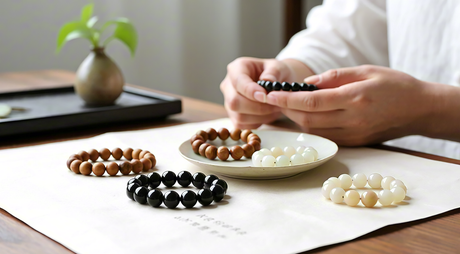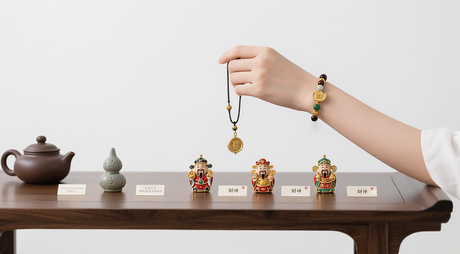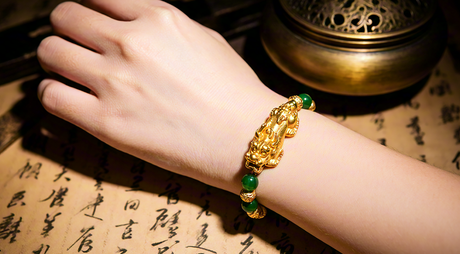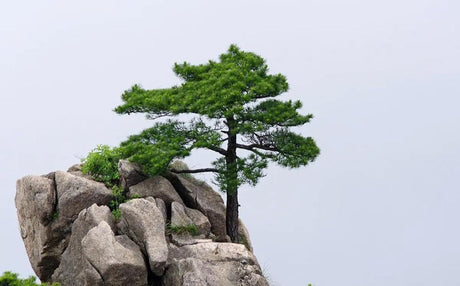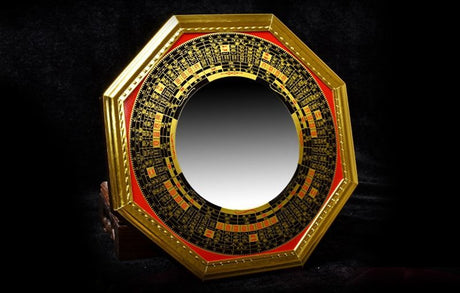Table of Contents
- Hanfu: Not Exclusive to Any Single Dynasty
- Origins: The Earliest Threads of Hanfu
- Foundation and Evolution: Zhou, Qin, and Han Dynasties
- Fusion and Transformation: Wei, Jin, Tang, and Song Dynasties
- Adaptation and Continuity: Yuan, Ming, and Qing Dynasties
- Revival: Hanfu in the Modern Era
Hanfu: Not Exclusive to Any Single Dynasty
Hanfu (汉服) is not the costume of a single historical period. Rather, it is a general term for the traditional clothing system of the Han ethnic group, carrying within it thousands of years of Chinese cultural and historical memory. From the era of the legendary Yellow Emperor to the late Ming and early Qing dynasties, Hanfu developed organically over time, rooted in the profound backdrop of Huaxia–Han culture and shaped by a core of ritual and propriety unique to Chinese civilization.
More than just garments, Hanfu is a vivid embodiment of China as the “Nation of Ceremonial Attire” (衣冠上国), “Land of Etiquette” (礼仪之邦), and “Splendid Civilization” (锦绣中华). It is also a testament to the exceptional achievements in dyeing, weaving, and embroidery of the Han people—truly a dazzling gem among the treasures of Chinese heritage.

Origins: The Earliest Threads of Hanfu
The origins of Hanfu are often linked to ancient legends surrounding the Yellow Emperor.
According to Records of the Grand Historian (史记), the Yellow Emperor's consort, Leizu (嫘祖), was said to have raised silkworms, spun silk, and made clothing. This indicates that the making of garments was already known in his time. Archaeological discoveries support this: bone needles and spinning whorls found at sites like Peiligang (裴李岗) and Baijia Village in Lintong, Shaanxi—dating back 7,000 to 8,000 years—suggest that people already had knowledge of weaving and sewing.
By the time of the Yangshao culture (仰韶文化) around 5,000 years ago, evidence of textiles became even more widespread: impressions of woven cloth appear on pottery, and sites have yielded remnants of ramie (苎麻) and silkworm cocoons, showing that agriculture and textile production were already well-developed. People had begun weaving linen from ramie and spinning silk from domesticated silkworms to create clothing. Although physical garments from this time haven't survived, the evidence points to the early conceptual formation of what would become Hanfu.
As Chinese civilization progressed, clothing also became a marker of social hierarchy. Over time, the traditional Han clothing system gradually took shape, featuring both technical refinement and ceremonial significance.
Foundation and Evolution: Zhou, Qin, and Han Dynasties
Zhou Dynasty: Ritual-Centered Standardization of Hanfu
The Zhou dynasty marks a pivotal period in the development of Hanfu, with ritual and ceremonial propriety at its core. Clothing was categorized based on different occasions—such as formal attire (礼服), auspicious garments (吉服), and mourning dress (凶服)—reflecting the Zhou people's strong emphasis on ritual etiquette.
The dress code was highly stratified. Garments differed in color, pattern, material, and style based on the wearer's social status, reinforcing the hierarchy of the feudal society.
- For men, one of the most prestigious ceremonial outfits was the Mianfu (冕服)—a crown robe ensemble used during ancestral sacrifices or grand state rituals. It consisted of a crown (mian), upper garment, lower skirt, and a knee covering, all adorned with intricate embroidered emblems called zhangwen (章纹).
- Next in formality was the Bianfu (弁服), similar in structure but lacking ornate patterns. Variations included Juebian (爵弁), Weibian (韦弁), and Guanbian (冠弁).
- The Xuanduan (玄端) was the emperor’s everyday ceremonial attire and was also worn by feudal lords and ministers for official court functions.
- The Shenyi (深衣) was a unique hybrid garment that sewed the upper and lower parts together while maintaining a clear division in pattern and construction. It was worn by both men and women for daily use and formal occasions.
-
For women, attire was equally elaborate and ceremonial. Each type of garment was designated for specific events:
- Yiyi (禕衣): worn by the queen during ancestral sacrifices alongside the king
- Yudie (褕翟): featuring twelve emblems, worn during sacrifices to royal ancestors and noble consorts
- Quedie (阙翟): worn when assisting the emperor in worshiping lesser deities and ancestral spirits;
- Juyi (鞠衣): worn during rituals honoring the silkworm goddess or when noblewomen assisted in ancestral rites
- Zhanyi (展衣): used during formal audiences or banquets hosted by the queen, also worn by wives of officials during temple ceremonies
- Luyi (禄衣): casual daily wear for the queen, also used in rituals by wives of common officials
- Chunyi (纯衣): traditional bridal attire worn by noble daughters
These garments were more than just clothing; they were a codified language of hierarchy, virtue, and gender roles. The Zhou dynasty established the ideological and structural foundation that would shape Hanfu systems for centuries to come.

Qin Dynasty: Reform and Uniformity
Though brief, the Qin dynasty played a unique role in the evolution of Hanfu.
After unifying the six states, Emperor Qin Shi Huang implemented sweeping reforms. He wore the Tongtianguan (通天冠) as daily headwear and abolished the complex multi-tiered crown systems of the Zhou. His standard court attire was a black robe with reddish-brown lower garments (玄衣纁裳), signifying the Qin court's preference for black, considered the most honorable color according to the Five Elements theory.
Officials wore robes with different colored sashes:
- High-ranking officials (third rank and above) wore green robes
- Commoners typically wore white robes
The Qin period’s garments continued earlier forms but also showcased structural standardization and practicality:
- Robes were primarily of two types: quju (曲裾, curved hem) and zhiju (直裾, straight hem)
- Both men and women wore cross-collared robes (大襟), with minimal gender differences in silhouette
- Men typically used leather belts with hooked ornaments
- Women preferred soft silk sashes
With advances in textile production, the traditional two-piece garments (upper and lower) gradually gave way to unified long robes (Shenyi), which became increasingly common. A typical Shenyi had an extended left panel, which wrapped around the body and was tied at the waist. Multi-color stitching was often added for decorative flair and visual balance.
Han Dynasty: Flourishing of a Complete System
During the Han dynasty, Hanfu reached its mature form, with comprehensive dress codes (冠服制度) firmly established by the Eastern Han under Emperor Ming (r. 57–75 CE). This codification became known as the “Han official dress system” (汉官威仪) and served as a model for future dynasties.
Garments became more varied, and Confucian ritualism played a vital role in shaping the clothing hierarchy. Popular styles included:
- Pao (袍): full-length robes
- Chanyi (襜褕): plain, straight-cut garments
- Ru (襦): short tops
- Qun (裙): skirts
Thanks to the flourishing silk industry, the wealthy could wear luxurious robes made of silk, damask, and gauze. Among women, the Quju Shenyi (曲裾深衣)—a body-hugging, floor-length robe with flared hem and distinctive overlapped collars—was especially popular. This robe created an elegant silhouette that concealed the feet while walking, with wide sleeves and layered collars. A notable fashion trend was "three-layered collars" (三重衣), where multiple undergarment collars were deliberately exposed for aesthetic effect.
In contrast, ordinary citizens typically wore Shenyi or the traditional upper-lower garment combination (上衣下裳). Over time, Shenyi became dominant, with increasingly voluminous skirts.
A new trend emerged in women’s clothing: Ruqun (襦裙)—short tops paired with wide, high-waisted skirts. This combination gave rise to a more youthful and dynamic look.
Additionally, influences from nomadic cultures—especially those from the northwest frontier—introduced round-collared robes, which began to be integrated into Han clothing, marking an early stage of cross-cultural fusion.

Fusion and Transformation: Wei, Jin, Tang, and Song Dynasties
Wei, Jin, and the Northern and Southern Dynasties: Aesthetic Shifts and Ethnic Fusion
The Wei, Jin, and Northern and Southern Dynasties were times of political upheaval and ethnic integration, profoundly influencing the style and structure of Hanfu.
During this period, Daoist-inspired metaphysical thought (玄学) became prominent, encouraging ideals of freedom, detachment, and natural elegance. These values manifested in clothing through the popularity of flowing, wide-sleeved garments (宽衣博带) that embodied a sense of relaxed, unrestrained grace.
This trend is vividly depicted in artworks such as the “Illustration of the Ode to the Goddess of the Luo River (《洛神赋图》)”, where the figures wear robes with billowing sleeves, embodying ethereal beauty and movement.
At the same time, ethnic integration brought about the fusion of traditional Han styles with elements from northern nomadic cultures. For instance:
- Short tops, narrow sleeves, and trousers—typical of nomadic attire—began to be adopted for their practicality and suitability for riding and physical activity
- Two notable hybrid garments from this era were:
- Kuze (裤褶): a two-piece outfit combining a short top with loose trousers
- Liangdang (裲裆): a vest-like garment with no collar or sleeves, consisting of two panels joined by ties—lightweight and warm
These garments expanded the variety of Hanfu and made it more adaptable to different climates and lifestyles.
Tang Dynasty: A Golden Era of Openness and Opulence
The Tang dynasty, one of China's most prosperous and cosmopolitan periods, brought about a renaissance in clothing culture. Hanfu during this time reflected the empire’s openness, artistic vibrance, and multicultural exchange.
For men, the most popular combination was the Futou (幞头) and round-collar robes (圆领袍衫):
- Futou originated as a simple cloth head wrap and evolved into a structured headgear with “wings” that curved upward at the back. Over time, it became a symbol of official status, particularly after it developed fixed shapes and stiffened brims
- The round-collar robe, with its symmetrical closure, fitted waist, and decorative trims at the collar, sleeves, and hem, became the standard male attire
- Civil officials wore long versions that reached the floor
- Military officers favored slightly shorter versions for mobility
For women, clothing was diverse, graceful, and fashion-forward:
- Qi-xiong ruqun (齐胸襦裙)—a style where the skirt was tied just below the bust—became immensely popular. It came in both overlapping (交领) and parallel (对襟) collar styles, with the latter being more common. The high waistline created a silhouette that emphasized elegance and vitality
- Gao-yao ruqun (高腰襦裙)—with a waistline just below the bust—similarly highlighted the female figure and remained fashionable throughout the Tang
- Women often wore additional layers such as:
- Banbi (半臂): a short-sleeved overcoat worn over the inner garment, striking a balance between comfort and ornamentation
- Pijian (披肩): decorative shawls or ribbons draped across the shoulders, which evolved into flowing sashes for ceremonial dances and formal occasions.
These Tang-era outfits celebrated the fusion of sensuality, elegance, and grandeur, reflecting the cultural confidence and dynamism of the age.

Song Dynasty: Restraint and Practical Refinement
In contrast to the flamboyance of the Tang, the Song dynasty—under the strong influence of Neo-Confucianism (程朱理学)—fostered a cultural atmosphere that emphasized modesty, practicality, and introspection. This shift directly influenced the style and character of Hanfu.
Men’s attire retained the basic structure of the round-collar robe, but stylistic details became more subdued:
- The Futou headgear evolved further: Song officials used hardened, lacquered Futou with internal wooden frames. Different shapes and wing sizes indicated the wearer’s official rank
- Commoners typically wore cross-collar (交领) or round-collar (圆领) long robes. During labor, garments were tucked into the waistband for ease of movement
- Retired officials and scholars favored the Zhizhuo (直掇)—a straight-cut, open-front robe—paired with the iconic Dongpo scarf (东坡巾), embodying the literati’s refined taste
For women, the Beizi (褙子) became a staple garment. This outerwear came in a variety of styles:
- Most common was the straight-collared, open-front design (直领对襟), typically worn by women
- Other variants included diagonal and circular collars
Beizi were tailored for a slim silhouette, with:
- Slits under the arms
- Sleeves of varying lengths and widths
- Different garment lengths (from waist to floor)
- Loose-fitting fronts that intentionally exposed inner layers (不制襟), adding an understated elegance
They were often paired with:
- Pleated skirts (褶裥裙): decorated with colorful prints, tie-dye, and gold embroidery techniques
- Moxiong (抹胸): a chest wrap made of silk or cotton, resembling a wide, strapless bandeau. It was worn under Beizi as both underwear and support
The Song dynasty’s Hanfu reflected an ideal of restrained beauty and domestic elegance, showcasing the era’s taste for balance between refinement and practicality.
Adaptation and Continuity: Yuan, Ming, and Qing Dynasties
Yuan Dynasty: The Influence of Nomadic Dress
During the Yuan dynasty, with the Mongols as the ruling ethnic group, Hanfu inevitably absorbed elements from Mongolian dress.
Mongolian clothing reflected the practical needs of nomadic life—shorter, tighter-fitting robes with pleated waists that facilitated horseback riding. Over the century-long rule of the Yuan dynasty, Han Chinese clothing began to incorporate these “Hu styles and Hu customs (胡风胡俗).”
For example:
- The Bianxian ao (辫线袄), originally a Mongolian robe featuring dense pleats at the waist, became popular for being both comfortable and suitable for riding
- The Zhizun fu (质孙服) was another hybrid garment—an integrated robe with a snug upper body, short lower section, and multiple waist pleats
These practical designs gained popularity among Han civilians, especially in labor-intensive contexts.
Mongolian accessories like hats and boots also influenced Han dress:
- Limao (笠帽), worn by Yuan men, came in various shapes (round or square) and materials (felt, leather), offering both functionality and decorative appeal
- High-tube leather boots, often ornately embroidered, were valued for their warmth and convenience for riding, and gradually adopted by Han Chinese
Despite these dominant trends, Hanfu traditions continued to survive in rural areas and among conservative scholars, who resisted cultural assimilation and clung to Song-style clothing as a form of identity preservation.
New fusion garments also emerged, such as the Yao xian ao (腰线袄), a robe with a defined waistline, tighter cut, and fitted silhouette—a symbolic blend of Mongol tailoring and Han aesthetics.
Ming Dynasty: Reviving the Han Ethos
At the beginning of the Ming dynasty, Emperor Zhu Yuanzhang (Ming Taizu) sought to restore Han cultural traditions and sever ties with the Mongol-dominated Yuan legacy. He decreed a return to Tang-style attire and a revival of Zhou and Han ceremonial systems, laying the foundation for Ming-era Hanfu.
While efforts were made to reestablish traditional styles—notably the cross-collared (交领右衽) and round-collar robes—some Mongol influences remained deeply rooted among the populace and persisted subtly in Ming fashions.
Officials’ headwear, though modeled on Song and Yuan Futou, underwent stylistic refinements to distinguish the new dynasty.
For the general public, clothing remained diverse and retained many traditional Han forms—robes, jackets, skirts, both short and long, suited for everyday wear and formal occasions. The spread of cotton fabrics improved accessibility to quality clothing for commoners.
Women's attire during the Ming dynasty was dominated by the Aoqun (袄裙) ensemble:
- This consisted of a jacket (Ao) worn over a skirt (Qun);
- Unlike earlier Ruqun, the jacket was worn outside the waistband rather than tucked into the skirt.
The Aoqun came in various forms:
-
By length:
- Chang’ao (长袄): long, extending below the knee to the calf, exuding elegance and formality
- Zhong’ao (中袄): medium-length, worn standalone or layered
- Duan’ao (短袄): short, above the knee, practical and neat
-
By closure style:
- Duijin (对襟): symmetrical front opening
- Dajin (大襟): diagonal closure crossing from under one arm to the opposite hip
-
By collar shape:
- Straight collar (直领): sleek and minimal
- Mandarin collar (竖领): upright, encircling the neck, traditional and dignified
- Round collar (圆领): softer and feminine
Women’s skirts also diversified, with two major types:
- Mamianqun (马面裙): panel-pleated skirt with wide flaring shape, enhancing graceful movement
- Baizhequn (百褶裙): multi-pleated skirt with evenly spaced pleats, offering an elegant flowing effect
Throughout the Ming era, Aoqun became the dominant fashion among both elites and commoners. Social status was reflected in the materials and embellishments used:
- Lower-class women wore plain linen or cotton in simple styles
- Wealthy women favored silk, gauze, and brocade adorned with gold thread, pearls, or gemstones, creating a look of opulence

Qing Dynasty: Suppression and Disappearance
The Qing dynasty, ruled by the Manchu ethnic group, dealt a severe blow to the development of Hanfu.
To weaken Han ethnic identity, the Qing court enforced the “Queue Order and Dress Reform (剃发易服)”, mandating:
- Han men to shave their foreheads and wear the Manchu queue hairstyle, and adopt Manchu-style robes, such as the Changpao (长袍) and Magua (马褂)
- Han women to wear the Qizhuang (旗装) and style their hair in elaborate Qitou (旗头) buns
Manchu attire featured:
- Mandarin collars, tight sleeves, and pankou buttons
- Loosely cut robes tailored for horseback travel
- Qizhuang with factory-style large lapels (厂字大襟) and side-fastening closures
- High bun hairstyles decorated with floral ornaments and jeweled pins
This policy was strictly enforced, often with violence and bloodshed, leading to the massive decline and eventual disappearance of Hanfu from mainstream society.
However, in remote rural areas and among Han loyalists, elements of Hanfu survived in secret as a form of cultural resistance. These vestiges laid the groundwork for later revival movements.
Revival: Hanfu in the Modern Era
In recent years, as Chinese society has rekindled its appreciation for traditional culture, Hanfu has experienced a remarkable resurgence.
The Hanfu revival movement emerged quietly but steadily, with a growing number of people—especially youth—expressing enthusiasm for wearing Hanfu and exploring its cultural roots. Social media platforms like Weibo, Xiaohongshu, Bilibili, and international platforms such as Instagram and YouTube, have become key venues for sharing Hanfu knowledge, outfit styling, historical research, and cultural meaning. These platforms have amplified the visibility of Hanfu, enabling more people to experience its charm.
Today, Hanfu enthusiasts not only wear these traditional garments in daily life, but also actively participate in a variety of themed events, including:
- Hanfu exhibitions
- Traditional culture festivals
- Ritual ceremonies
- Seasonal celebrations like Spring Festival, Mid-Autumn Festival, and Dragon Boat Festival
Hanfu is no longer viewed as merely a historical costume, but has transformed into a living expression of cultural identity and pride.

This revival has also gained momentum across other areas of society:
- Schools and educational institutions are incorporating Hanfu culture into the curriculum, teaching students about its history, etiquette, and even how to wear or make traditional garments
- Businesses and fashion brands have identified Hanfu’s commercial potential, releasing diverse styles to meet varying consumer preferences
Modern Hanfu design has embraced innovation and adaptability, integrating contemporary tailoring, materials, and fashion aesthetics. This has led to the rise of "improved Hanfu (改良汉服)"—garments that retain core Han elements such as cross-collars, flowing skirts, and traditional silhouettes, while adjusting lengths, fits, and closures to suit modern wearers.
Some key features of modernized Hanfu include:
- Lightweight fabrics like chiffon, modal, and jersey for comfort and breathability
- Simplified fastenings such as zippers or snaps in place of traditional sashes
- Hybrid styles that merge Hanfu with streetwear, officewear, or cosplay elements, making Hanfu more versatile for daily or performance use
As a result, Hanfu has evolved from a niche cultural hobby into a mainstream trend in Chinese youth culture—and is increasingly recognized internationally.
Globally, interest in Hanfu is growing:
- Foreign tourists in China often rent or purchase Hanfu to experience its elegance firsthand
- International students, cosplayers, and cultural enthusiasts abroad are wearing Hanfu to Chinese New Year festivals, comic conventions, and cultural exchange programs
- On TikTok and Instagram, videos featuring Hanfu stylings and dances have attracted millions of views, sparking global curiosity
Hanfu has become an ambassador of Chinese heritage, proudly representing the continuity and richness of Chinese civilization.

More importantly, Hanfu's revival reflects a renewed cultural confidence. It affirms the beauty and value of traditional Chinese aesthetics, craftsmanship, and philosophy—and allows younger generations to reconnect with their identity in meaningful and expressive ways.



